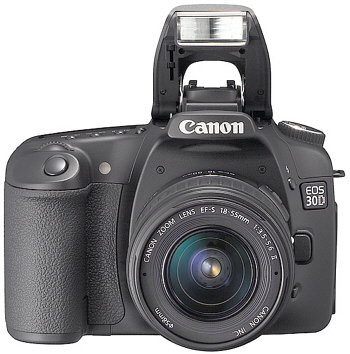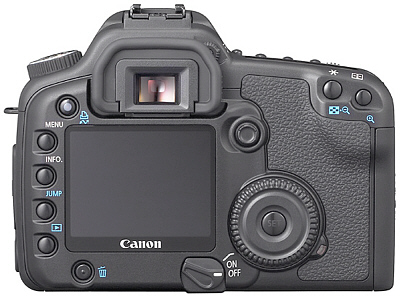
|
Canon EOS 30D - Hands-on Review
The EOS 30D is Canon's upgrade of the very popular EOS 20D. Though both cameras share the same sensor (1.6x APS-C format, 8.2 MP) the EOS 30D adds a number of new features making the EOS 30D an even more capable camera then it's predecessor. Notable are the addition of a 2.5" LCD screen, spot metering, RGB histograms and an increased buffer size. Here are the main highlights of the new Canon EOS 30D:
Physically the EOS 30D is esentially a twin of the EOS 20D, the only obvious exterior difference being a larger LCD and a dedicated "print" button. I'm not going to describe every single nut and bolt, menu item and operating mode of the EOS 30D. You can find those on other websites or you can download the EOS 30D manual and study it in detail yourself. Instead I'm going to concentrate mainly on what I think are the important features and what I think are the main operational differences (or similarities) between the EOS 30D and EOS 20D. Rear LCD Display
The LCD has been increased to 2.5", which is the same size as the LCD on the EOS 5D. I found the larger LCD much more useful than I'd really anticipated it would be. It was easier to read text on (my eyes aren't as good as they once were!), plus it was easier to review images since finer detail could be seen. The LCD is also readable over a vertical and horizontal angle of about 170 degrees, a significantly wider viewing angle than the LCD on the EOS 20D. TimingCanon have reduced the startup time by 50ms from 0.2 seconds on the EOS 20D to 0.15 seconds on the EOS 30D. It pretty hard to tell the difference though. Both cameras are essentially "instant on" as far as a user is concerned. All other display times are as fast as or faster than those of the EOS 20D. The EOS 30D is a very responsive camera and in normal shooting operation you don't need to wait for functions to be executed. Even when viewing menu items, the camera instantly returns to shooting mode when the shutter release is depressed. Basically shooting has priority over all other functions (such as reviewing images) and there's no perceptible lag in returning to the shooting mode. NEXT -> Buffer Size and Continuous shooting Performance
© Copyright Bob Atkins All Rights Reserved |
|

